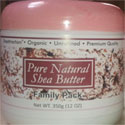[NB: Even though I use pig farming based examples, the ideas I share below, apply to all livestock types]. This article was inspired by the following 2 comments posted by a Kenyan and a Nigerian Farm CEO, about livestock feed production…in 2 separate online discussions.
1. “Feeds take up to 80 per cent of pig production costs.”
The above was posted as a comment in an online Agro-forum discussion, by a Kenyan Farm CEO.
He was right. I would add that feeding costs for most livestock farms (not just pigs, but also poultry, fish etc), range between 70 to 80 percent.
2. “…In Nigeria we use a lot of wet and unconventional feeds which makes it tricky to calculate. “
This second comment was posted in a different forum, by a Nigeriann Farm CEO. Again, I agree with the stated opinion.
But I will now go further in this article to explain why that situation exists, for pig farmers, and what can be done by interested farm CEOs.
I spent the past decade supporting farm businesses with feed formulation and best practice farm business management solutions in and out of Nigeria.
My experience and observations during that period convince me that most farm CEOs lack both the knowledge of feed formulation raw materials (aka feed stuff) as well as the competence to formulate and compound balanced livestock feed.
The above stated shortcomings of many farm CEO often limit their abilities to make their own feeds.
The sad reality however is that few of those farmers can afford to continually purchase the increasingly expensive commercial feed available from manufacturers.
And that is where companies exist which sell bagged feed that would be cost-effective or economical for pig farmers to serve their animals.
This is why most pig farmers in this part of the world end up engaging in basic mixing of ingredients like Brewers Spent Grains, with concentrates, and/or grains like maize, soybeans combined with crop farming by products.
Unfortunately, feed mixing practices rarely enable livestock farmers get reliable, predictable or reproducible performance from their animals.
This is because:
- They rarely get laboratory analyses done of the individual feed ingredients used for the mixture – and so do not know what their respective nutrient compositions are.
- They rarely, if at all ever, get laboratory analyses done of the mixture served to the different animals, to determine what nutrients profile it delivers to the animals.
- They rarely, if at all ever, bother to investigate and ascertain what the nutrient requirements of the different classes of animals they have to feed are. This denies them the valuable insights needed to guide their feed mixing efforts, to ensure the nutrient needs of the target animals are met!
Simply put, therefore, most pig farmers, by acting in the manner described above – which they see many of their peers doing – end up unable to accurately ascertain what they are doing right, in order to reproduce it, and get more consistent pig performance.
Having said the above, it must be understood however that most of these Pig Farm CEOs do NOT engage in the above mentioned inefficient feeding practices because they do not care to do it right.
Instead, my observations indicate that a large majority have no idea there is any other way to do it. Most of those they know in the business operate in a similar way.
Many start out being told by those they consult, that “That is how we have been doing it”.
So they join the bandwagon.
The truth is however that just like it is for all other livestock farm business owners, any pig farmer who wishes to make decent profits for the long term is that formulating (and not just mixing) his/her own feeds is the way to go.
But doing it via basic feed ingredients mixing will simply NOT cut it!
In other words, you cannot WING livestock feed formulation. You cannot cut any corners without suffering negative outcomes in terms of performance your animals yield.
Feed formulation is a science and must therefore be practiced in a manner consistent with scientific rules and guidelines.
There is no room for baseless assumptions, or haphazard implementation of methods or processes.
Everything has to be done right – from sampling of ingredients for nutrient analysis, to milling/grinding, analysis of the resulting feed – right up to feeding the animals, and measuring their response in terms of performance (weight gain, milk production etc).
As long as you can get the right amounts and quality of feed ingredients to use for your ration formulation, you stand to gain major savings in feeding your pigs in the long run – and they would deliver better performance too.
Here are a few questions to ask yourself, as a Farm CEO looking to boost profits by cost-effectively feeding your animals:
1. Do you understand the science of feed formulation, and how it differs from feed compounding and mixing?
2. Do you know what nutrients your animals will need at different stages of their lives and growth?
3. Do you know what the best or most suitable livestock feed ingredients are available to you for cost-effectively preparing feed for your animals?
4. Do you know the nutrient compositions of the different feedstuffs you can use in formulating rations for your pigs?
5. Do you know where you can send samples of your feed ingredients and the feed you produce from ration formulas you prepare?
The above are just a few of the critically important questions you need to have answers to, if you are serious about really feeding your pigs the right way, so as to get the best possible performance from them.
The principles of livestock feed formulation are universal.
They apply to all classes of animals.
What is important is that you understand what they nutritional requirements or needs of the target animal are, so that you can formulate your ration to meet those specific needs.
And that includes pigs that are to be fed (e.g. Piglets, Weaners, Porkers, Baconers, Sows, Gilts, and Boars).
So, for your pigs, you want to first of all what the nutrient requirements of the different classes of pigs you will be rearing are.
The nutrients you want to supply to your pigs are crude protein, metabolizable energy, mineral elements, vitamins and water.
Examples of ingredients that supply each of these nutrient types are provided in my Feed Formulation Handbook.
Recommended provisions for each of them need to be clearly defined. You may need to get locally established values from the ministry or research bodies in your region, state or locality.
It is never wise to go with textbook values or data from generic publications.
You will also need to get results of average laboratory analyses that have been done of typical feed ingredients that are used to feed pigs on farms.
This will be needed for your ration formulation computations.
I recommend you invest quality time and effort in reading up on this subject. Loads of useful information can be found online, to get you up and running.
However, my checks indicate it can be hard to ascertain what can help YOU, from the mass of advice that you are likely to encounter.
This is especially so, if you do not have formal training or any background in livestock farming or better still animal science/feed formulation.
This is why I offer access to my Feed Formulation solutions – including a special On Demand Practical Training Workshop on Low Cost High Performance Pig Feed Formulation.
Click here to request details of what the training entails – including Home Study resources on offer to every trainee.









Warning: count(): Parameter must be an array or an object that implements Countable in /home1/tayoswdg/public_html/sdnuggets/wp-includes/class-wp-comment-query.php on line 399